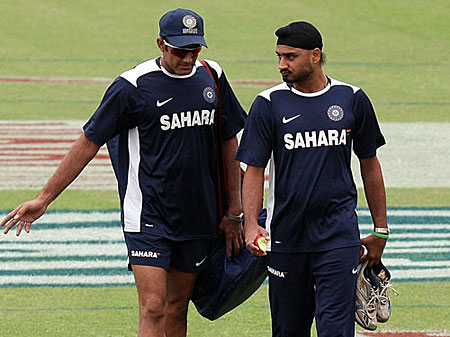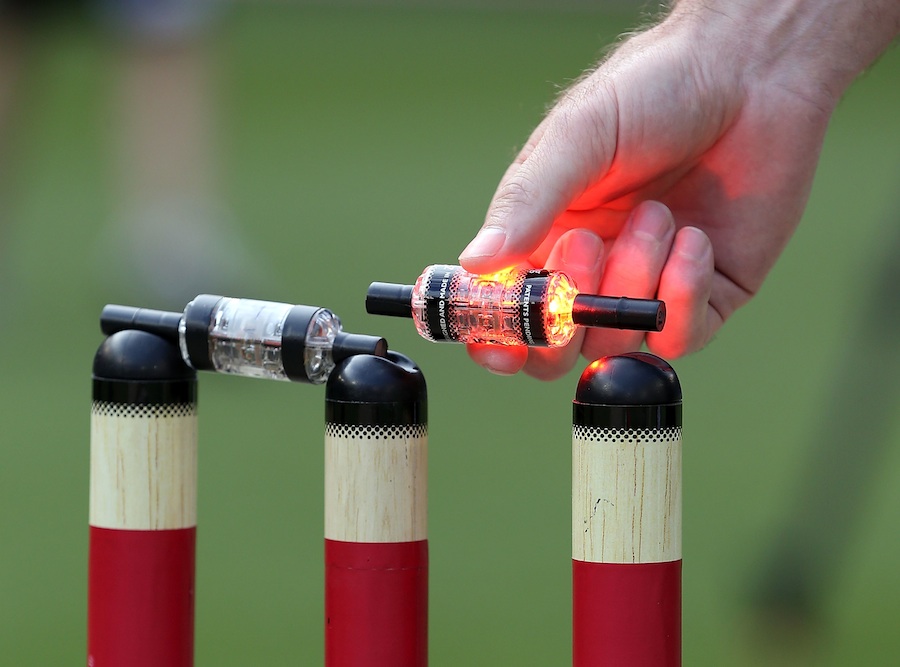To consistently give their best, bowlers need their captains to have confidence in them. This is particularly true of spinners, who must rely on craft and cunning more than the quicker bowlers do. Rarely do we come across spin bowlers thriving under captains who do not believe in their ability or have an inadequate understanding of their trade.
For starters, the better captains allow at least four or five overs for the spinner to settle into an even rhythm. This is the time the bowler takes to ensure that every ball lands where he wants it to, before he can launch into any variations. Some of the greatest spinners in the game have been known to attempt nothing dramatic during this period.
Only once he has found his length will the sensible bowler try out variations of flight and turn. He is aware of the subtle variations inherent in deliveries, even without his attempting them; no human can actually bowl six identical balls, though they may look similar to the naked eye. A good captain therefore starts with a fairly defensive field, and brings his men in only after the bowler has found his groove.
In contrast, not only do some bowlers, even at the international level, appear to try too many tricks too soon, some captains too expect their bowlers to start attacking from the word go, impatient with the relative lack of flight and turn in the early overs. The result can be overpitching, or bowling rank short balls, or bowling down the wrong line altogether, giving the batsman free runs and a bonus dose of confidence.
The ideal delivery by a spinner has the batsman playing forward but unable to reach the ball, the arc caused by the spin dropping the ball just short and deflecting it in a direction not intended by the batsman. The genuine spinner hates it when the batsman can play him off the back foot, a much more damaging prospect than being driven off the front foot.
While close catchers on either side of the wicket are essential for the bowler to have any impact on the batsman, the rest of the field is just as crucial to the effectiveness of the bowler, as we all know. In addition to slip (and gully) for the legspinner, or forward (and backward) short-leg for the offspinner, short extra cover and short midwicket are excellent attacking positions, ready to hold on to miscued drives. To a right-hand batsman, a sweeper on the off side for an offspinner, or a deep midwicket for a legspinner would indicate either a criminal lack of confidence on the part of the bowler or complete ignorance on the part of the captain and/or the bowler.
The question of who sets the field, the bowler or his captain, is something we hear discussed in the commentary box, and my view is that the bowler must bowl to his captain's field, assuming that the captain knows what he is doing.
This is where it is handy to have experienced bowlers in the side, because they can save the captain the trouble of setting their field, unless the captain is shortsighted enough to overrule the bowler who knows his bowling, and imposes his own views on him.
With young or inexperienced bowlers, however, the onus is on the captain to decide the line of attack, guide the bowler and set the field appropriate to the bowler, batsman, wicket, or state of the innings.
Mansur Ali Khan Pataudi and Ajit Wadekar - each in his own distinct way - were captains who knew how to bring out the best in their spinners. In his first stint as India captain, Pataudi was young and inexperienced, but by the time the new crop of spinners (soon to become known as the quartet) came into the side in 1967, he was five years old in the job, and I suspect had gained much practical wisdom in the company of such captains in the South Zone as V Subramanya of Karnataka and ML Jaisimha of Hyderabad. The famed close-in cordon of the Indian team perhaps had its origins there. Wadekar's captaincy was shaped in a relatively defensive mode, but when he took over from Pataudi in 1971, he had the advantage of leading a highly experienced combination of spinners, who helped deliver India's first series victories in the West Indies and England.
In the decades that followed, captains from Bishan Bedi down to Rahul Dravid led spin attacks in varying degrees of efficacy and different styles of handling, but I am partial to the manner in which Anil Kumble marshalled his spin resources, thanks to his superior domain knowledge. I believe he was the best when it came to managing the slow men. Unfortunately, the Indian captaincy came to him late in his career. After all, the idea of a bowler-captain is not the most popular theory around.

 TFT Issue: 05 Sep 2014
TFT Issue: 05 Sep 2014
